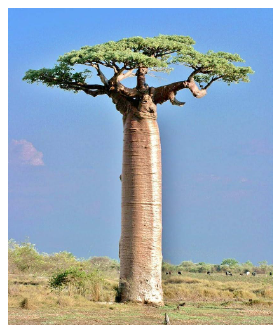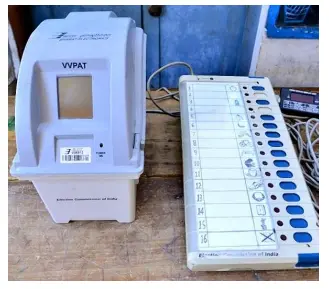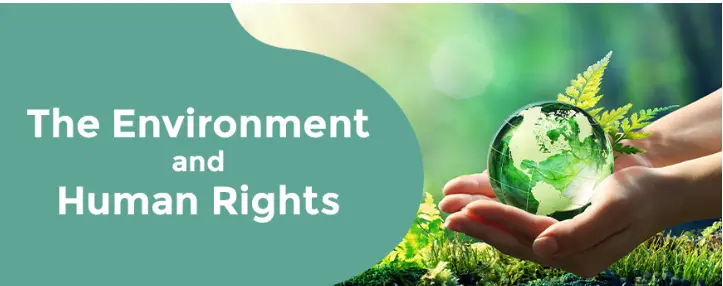Friday, 12th April 2024
2024 QS World University Rankings
In News: The latest iteration of the QS World University Rankings for 2024 has recently been unveiled.

Insights from the 2024 QS World University Rankings and India's Research Landscape
Overview of QS World University Rankings
- QS is a London-based global higher education analyst.
- QS World University Rankings is an annual publication comparing universities in four major areas: Research, Teaching, Employability, and International outlook.
- Each area is assessed through six performance indicators.
Performance of Indian Universities
- 69 Indian universities are included in the QS World University Rankings by Subject, with 424 entries, showing a 19.4% increase from the previous year.
- JNU ranks highest for development studies (20th globally), followed by IIM-Ahmedabad for business and management studies (22nd globally), and Saveetha Institute of Medical and Technical Sciences for dentistry (24th globally).
- India is the second-highest represented country in Asia, with 69 universities featured, behind China, Japan, and South Korea in ranked subject entries.
Research Perspective
- India is the world's fourth-largest producer of research, generating 1.3 million academic papers in 2023-24.
- There has been a 16% growth in the international research network indicator, reflecting volume and diversity of research partnerships.
- However, there is a 5% decrease in the index assessing the balance between research productivity and impact.
- India's research output surged by 54% from 2017 to 2022, exceeding the global average and positioning it close to overtaking the United Kingdom in research productivity.
- Despite impressive numbers, India ranks ninth globally for research impact, highlighting the importance of prioritizing high-quality, impactful research dissemination within the academic community.
Source: NDTV
Supreme Court: DMRC Exempt from Paying Rs 8,000 Crore to Reliance Infra's Arm
In News: During the proceedings of a curative petition, the Supreme Court reversed its previous judgment made in 2021 concerning a case concerning the Delhi Metro Rail Corporation (DMRC) and Delhi Airport Metro Express Private Limited (DAMEPL).
Understanding Curative Petitions and the DMRC-DAMEPL Dispute
Curative Petition: The Last Constitutional Remedy
- Curative petition serves as the final recourse available to individuals after their review petition is dismissed by the Supreme Court.
- It is rooted in the innovative interpretation of Article 142 of the Constitution, which empowers the Supreme Court to ensure complete justice.
Grounds for Entertaining Curative Petition
- Curative petitions are entertained based on strong grounds such as violation of natural justice principles or judicial bias.
- Certification by a senior advocate is required, and vexatious petitions may incur exemplary costs.
Background of the DMRC-DAMEPL Dispute
- Partnership and Dispute: The Delhi Metro Rail Corporation (DMRC) entered a partnership with DAMEPL for the Delhi Airport Metro Express, leading to operational and financial disagreements.
- Rise of Dispute: Issues arose over concession fees and safety concerns, resulting in termination of the agreement by DAMEPL and subsequent arbitration proceedings.
- Judicial Proceedings: The arbitration panel initially ruled in favor of DAMEPL, but the decision was overturned by the Delhi High Court, then reinstated by the Supreme Court.
- Resort to Curative Petition: DMRC filed a curative petition after its review petition was dismissed, seeking redressal for what it deemed as injustice.
Recent Judgment by the Supreme Court
- Lack of Valid Basis: The Supreme Court observed that its interference in the case had no valid constitutional basis.
- Restoration of Illegal Award: The Court acknowledged that its intervention led to the reinstatement of an illegal arbitration award.
- Heavy Financial Burden: The decision placed a significant financial burden on a public utility, resulting in serious injustice.
- Use of Article 142: The Supreme Court invoked Article 142 of the Constitution to address the perceived injustice in the case.
Source: FE
CDP-SURAKSHA
In News: The government has introduced a novel platform called CDP-SURAKSHA for disbursing subsidies to horticulture farmers as part of the Cluster Development Programme (CDP). This initiative aims to promote horticulture crops and enhance the efficiency of subsidy distribution within the sector.

Understanding CDP-SURAKSHA, Horticulture Cluster Development Program, and e-RUPI
CDP-SURAKSHA: Revolutionizing Subsidy Disbursement in Horticulture
- CDP-SURAKSHA is a digital platform facilitating instant subsidy disbursal to farmers.
- SURAKSHA stands for "System for Unified Resource Allocation, Knowledge, and Secure Horticulture Assistance."
- Features include database integration with PM-KISAN, cloud-based server space from NIC, UIDAI validation, eRUPI integration, LGD, content management system, geotagging, and geo-fencing.
- Unlike the old system, subsidies are provided upfront to farmers at the time of purchasing planting material.
- Vendors receive payment only after farmers verify delivery of orders.
- Aims to boost India's horticulture sector, which contributes significantly to agriculture GVA.
Horticulture Cluster Development Program (CDP): Driving Competitiveness and Growth
- Part of NHB's central sector scheme, CDP aims to develop globally competitive horticulture clusters.
- Goals include increasing exports of targeted crops, creating cluster-specific brands, and reducing post-harvest losses.
- Currently, 55 horticulture clusters have been identified, with 12 selected for the pilot phase.
- Future goals involve covering 9 lakh hectares and attracting private investment of Rs 8,250 crore.
e-RUPI: Empowering Digital Voucher-Based Payments
- e-RUPI is a digital voucher issued via SMS or QR code, usable for specific purposes like healthcare services.
- Developed by NPCI in collaboration with the Ministry of Health & Family Welfare and National Health Authority.
- Not to be confused with digital currency, e-RUPI is person-specific and purpose-specific.
- Benefits for consumers include easy redemption without a bank account and operability on basic phones.
- Expected to strengthen Direct Benefit Transfer, reduce costs for sponsors, and ensure real-time payments for service providers.
Source: IE
Global Trade Outlook
In News: The latest edition of the Global Trade Outlook & Statistics Report has been published by the World Trade Organization.

Overview of the World Trade Organization and Global Trade Outlook
World Trade Organization (WTO)
- An intergovernmental organization regulating international trade since 1995.
- Replaced the General Agreement on Tariffs and Trade (GATT) established in 1948.
- Facilitates trade in goods, services, and intellectual property through negotiation frameworks aiming to reduce trade barriers.
Membership and Headquarters
- Comprises 164 member states representing over 96% of global trade and GDP.
- Headquarters located in Geneva, Switzerland.
- Decisions made by consensus among all members, granting each member veto powers.
Global Trade Outlook & Statistics Report
- Provides analysis of recent trade developments and forecasts for world trade in 2024 and 2025.
- Predicts merchandise trade volume growth of 2.6% in 2024 and 3.3% in 2025, rebounding from a decline in 2023.
- Weak import demand in 2023, particularly in Europe and North America, except for the Middle East and CIS regions.
- GDP growth slowed in 2023 but expected to stabilize at 2.6% in 2024 and 2.7% in 2025.
- Decline in merchandise trade offset by a surge in commercial services trade, driven by recovering international travel and digital services.
- Despite economic shocks, world trade remained resilient, with merchandise trade volume up 6.3% compared to 2019 by the end of 2023.
- Inflation expected to ease in 2024 and 2025, boosting real incomes and demand for tradable goods.
- Risks include geopolitical tensions, policy uncertainty, and rising protectionism, potentially undermining trade recovery.
Source: TH
Baobab Tree
In News: The Global Society for the Preservation of Baobabs and Mangroves (GSPBM) has embarked on a pioneering conservation effort to revitalize the iconic baobab trees in Madagascar.

Baobab Tree: The Majestic "Tree of Life"
- Distribution
- Nine species of baobab trees exist, with two native to mainland Africa, six to Madagascar, and one to Australia.
- Mandu, located in the Dhar district of Madhya Pradesh, is a notable area in India where baobab trees thrive.
- Features
- Long-lived deciduous trees with broad trunks and compact tops, often referred to as the "upside-down tree."
- Known for their remarkable longevity, with some specimens surviving for thousands of years.
- Mature trees possess massive trunks that are bottle-shaped or cylindrical, tapering from bottom to top.
- The fruit of the baobab tree is round or oval-shaped and highly nutritious.
- Ecological Significance
- Baobabs serve as keystone species in Madagascar's unique landscapes.
- Their large trunks and extensive root systems play a crucial role in storing water in arid environments, sustaining both the trees and surrounding ecosystems during droughts.
- This water storage capability supports diverse life forms, from microorganisms to larger animals, promoting biodiversity in baobab habitats.
Source: DTE
National Investment and Infrastructure Fund
In News: The NIIF has allocated $200 million towards iBUS Network and Infrastructure Pvt Ltd., a connectivity technology firm, as part of its efforts to bolster the expansion of India's digital infrastructure.
Overview of the National Investment and Infrastructure Fund (NIIF)
- Establishment and Mandate
- NIIF, established in 2015, is India's inaugural sovereign wealth fund (SWF) aimed at investing in infrastructure and related sectors.
- Anchored by the Government of India, it serves as a collaborative investment platform for both international and Indian investors.
- Investment Focus
- NIIF invests equity capital in various asset classes, including infrastructure, private equity, and diversified sectors in India.
- The fund targets greenfield, brownfield, and stalled projects to foster development across the infrastructure landscape.
- Ownership and Assets
- Majority-owned by institutional investors, NIIF is 49% owned by the Indian government and manages assets exceeding $4.9 billion, making it India's largest infrastructure fund.
- Despite its association with the government, NIIF maintains independence in its investment decisions.
- Regulatory Framework
- Registered as an Alternative Investment Fund (AIF) with the Securities Exchange Board of India (SEBI), NIIF is actively raising capital from both domestic and international institutional investors.
- Managed Funds
- NIIF manages capital through four distinct funds:
- NIIF Master Fund: Primarily focuses on infra-related projects such as roads, ports, airports, and power, serving as India's largest infrastructure fund.
- NIIF Private Markets Fund: Invests in funds managed by third-party managers in infrastructure and associated sectors.
- NIIF Strategic Opportunities Fund: Invests in and develops large-scale businesses and greenfield projects of strategic importance to India.
- India-Japan Fund: NIIF's bilateral fund aimed at environment preservation in India, with a target corpus of US$600 million, jointly contributed by the Governments of India and Japan.
- NIIF manages capital through four distinct funds:
Source: TH
Wigner Crystal
In News: For the very first time, scientists have achieved the remarkable feat of visualizing the elusive Wigner crystal, a peculiar form of matter composed entirely of electrons.

Exploring the Phenomenon of Wigner Crystal
- Conceptualization
- Proposed by Eugene Wigner in 1934, a Wigner crystal represents the solid phase of electrons, primarily stabilized by their mutual repulsion.
- Formation Mechanism
- The interaction among electrons induces their spontaneous arrangement into a lattice-like configuration, known as a Wigner crystal.
- This phenomenon occurs under conditions of low densities and extremely cold temperatures, where potential energy dominates over kinetic energy.
- Quantum Characteristics
- In a true Wigner crystal, electrons behave according to the laws of quantum physics, acting more like a single wave rather than individual particles.
- Stability
- Wigner crystals are stable at extremely low densities, where the potential energy minimization drives the formation of the crystal-like configuration.
- However, as the density increases, the significance of kinetic energy rises, leading to the eventual melting of the crystal.
- Experimental Challenges
- Despite its theoretical significance, observing Wigner crystals experimentally is exceptionally challenging due to their fragility in response to environmental factors.
- The delicate nature of Wigner crystals makes them highly susceptible to disruption, hindering their experimental observation.
Source: NS
Defence Attache
In News: In a significant development aimed at broadening strategic alliances with key regions globally, India has commenced the deployment of military and defence attachés to numerous additional countries.
Role and Diplomatic Status of Defence Attache (DA)
- Definition and Representation
- A Defence Attache (DA) is a military personnel serving in an embassy, tasked with representing their country's defence establishment abroad.
- DAs may hail from various branches of the armed services, though larger countries may appoint DAs to represent specific service branches, such as air force or naval attaches.
- Responsibilities
- The primary duty of a DA is to safeguard, advance, and advocate for their country's defence interests in the host nation.
- They also play a crucial role in fostering bilateral military and defence relations between their country and the host nation.
- Specialized Assignments
- Some DAs are assigned to work on specific issues, such as migration, in addition to their general responsibilities.
- DAs may also participate in military missions with international organizations like NATO, the EU, or the UN, where they often serve as mission heads or military advisors.
- Diplomatic Status
- As per the Vienna Convention on Diplomatic Relations of 1961, DAs are granted diplomatic immunity based on their rank within the diplomatic mission.
- Article 7 of the Convention classifies DAs as members of the diplomatic staff, entitling them to full immunity during their diplomatic assignments.
Source: TOI
Invasive Alien Species
In News: The Andaman and Nicobar Islands administration has reached out to the Wildlife Institute of India to address the growing population of invasive chital (spotted deer) on Ross Island.

Understanding Invasive Alien Species
- Definition
- Invasive Alien Species (IAS) are organisms whose introduction and/or proliferation outside their natural habitat pose a threat to biodiversity.
- These encompass a wide range of organisms, including animals, plants, fungi, and microorganisms, and ca
- Characteristics
- IAS typically exhibit traits such as rapid reproduction, high dispersal ability, phenotypic plasticity, and adaptability to diverse environmental conditions.
- They outcompete native species for resources and disrupt the natural balance of ecosystems.
- Impact on Ecosystems
- Invasive species can disrupt food chains and dominate ecosystems where there is no natural competition.
- They pose a significant threat to biodiversity and can cause ecological imbalances.
- Vulnerable Areas
- Human-disturbed ecosystems are more susceptible to invasion due to reduced competition from native species.
- Islands, being isolated from strong competitors and predators, are particularly vulnerable to invasion.
- Ecological niches on islands, unfilled due to distance from colonizing populations, increase the likelihood of successful invasions.
- Examples in India
- In India, invasive wildlife includes species of fish like African catfish, Nile tilapia, red-bellied piranha, and alligator gar, as well as turtle species like the red-eared slider.
Source: IE
Fast-Moving Consumer Goods
In News: The Rs 5-trillion domestic fast-moving consumer goods (FMCG) market continues to encounter obstacles as it strives to achieve full recovery from the existing slowdown.
Overview of Fast-Moving Consumer Goods (FMCG)
- Definition and Characteristics
- FMCG, also known as Consumer Packaged Goods (CPG), refers to products that are sold quickly and at a relatively low cost.
- This industry is characterized by high-volume sales, rapid inventory turnover, and a wide range of products meeting consumer needs.
- Product Range
- FMCGs encompass essential everyday items such as food and beverages, toiletries, cleaning supplies, and other low-cost household goods.
- These goods often have a short shelf life due to high consumer demand (e.g., soft drinks, confections) or perishability (e.g., meat, dairy products, baked goods).
- FMCG Industry in India
- India's FMCG sector ranks as the fourth-largest segment in the nation's economy.
- In 2022, urban areas accounted for 65% of total annual FMCG sales, while rural regions contributed over 35%.
- Household and personal care products constitute 50% of industry sales, healthcare claims 31-32%, and food and beverage products make up the remaining 18-19%.
- Economic Contribution
- The FMCG industry in India provides employment opportunities to approximately 3 million individuals, representing about 5% of total factory employment in the country.
Source: FE
UNSC Reform Requires India as Permanent Member
In News: Amid India's active advocacy for structural and functional reforms within the United Nations, Dennis Francis, the president of the global forum, has voiced optimism regarding India's prospects of securing a permanent seat on the UN Security Council.
Reforming the United Nations: Addressing Structural Inequities and China's Role
Urgency for Comprehensive UN Reforms
- Prime Minister of India's call for comprehensive UN reforms at the 76th UNGA highlights the necessity to address outdated structures unable to tackle current global challenges.
- Emerging issues like climate change, terrorism, and sustainable development goals were not prioritized upon the UN's establishment but have become pressing today.
- Post-World War 2 conflicts persist, disrupting global peace and economic progress, exacerbated by vulnerabilities exposed by the Covid-19 pandemic.
Contradictions in Global Attitudes towards India's UNSC Seat
- Global recognition of India's candidacy for a UNSC permanent seat, as expressed during bilateral talks and statements from the US.
- The Uniting for Consensus (UFC) group's proposal to expand non-permanent membership counters the exclusive nature of the current P5 structure.
- Western countries' insincerity is apparent as they advocate for democracy while excluding India, the largest democracy, from UNSC's high table.
China's Obstruction and Role in UNSC Reform
- Italy-China coordination within the UFC obstructs genuine reforms and expansion of the P5, undermining justice.
- China opposes Japan's inclusion in the G4 group, highlighting geopolitical tensions and historical grievances.
- Despite historical support from India, China's aggressive actions and lack of acknowledgment of obligations underscore the need for reform and accountability.
India's Role and Responsibilities
- India's historical support for China's UNSC membership contrasts with China's aggressive actions towards Tibet and India.
- India bears the responsibility to advocate for structural reforms in the UN and address geopolitical inequities.
Conclusion: Urgent Need for UN 2.0
- Restructuring and democratizing the UN to adapt to present geopolitical realities are essential for achieving peace and prosperity.
- A more relevant, credible, and representative UN 2.0 is imperative to ensure global peace and security.
Source: TH
Share the article
Edukemy’s Current Affairs Quiz is published with multiple choice questions for UPSC exams
MCQ
Get Latest Updates on Offers, Event dates, and free Mentorship sessions.

Get in touch with our Expert Academic Counsellors 👋
Frequently Asked Questions
UPSC Daily Current Affairs focuses on learning current events on a daily basis. An aspirant needs to study regular and updated information about current events, news, and relevant topics that are important for UPSC aspirants. It covers national and international affairs, government policies, socio-economic issues, science and technology advancements, and more.
UPSC Daily Current Affairs provides aspirants with a concise and comprehensive overview of the latest happenings and developments across various fields. It helps aspirants stay updated with current affairs and provides them with valuable insights and analysis, which are essential for answering questions in the UPSC examinations. It enhances their knowledge, analytical skills, and ability to connect current affairs with the UPSC syllabus.
UPSC Daily Current Affairs covers a wide range of topics, including politics, economics, science and technology, environment, social issues, governance, international relations, and more. It offers news summaries, in-depth analyses, editorials, opinion pieces, and relevant study materials. It also provides practice questions and quizzes to help aspirants test their understanding of current affairs.
Edukemy's UPSC Daily Current Affairs can be accessed through:
- UPSC Daily Current Affairs can be accessed through Current Affairs tab at the top of the Main Page of Edukemy.
- Edukemy Mobile app: The Daily Current Affairs can also be access through Edukemy Mobile App.
- Social media: Follow Edukemy’s official social media accounts or pages that provide UPSC Daily Current Affairs updates, including Facebook, Twitter, or Telegram channels.






